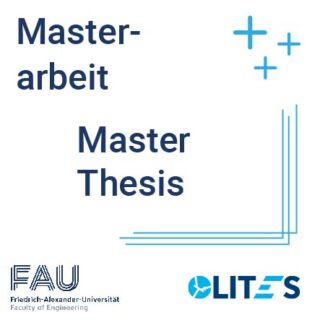Development of RF fingerprinting methods for radio transmitters
Description
Radio Frequency (RF) Fingerprinting offers the potential for rapid authentication of communication partners in future wireless communication systems. Potential application areas include mobile communications and radar applications. Other hardware-based methods, such as Physically Unclonable Functions (PUF), are related to RF Fingerprinting.
The characteristics that enable RF Fingerprinting are tied to the respective RF hardware through implicit or explicit methods. These include, for example, the nonlinear behavior of amplifiers, phase noise, or I-Q imbalances. In a broader sense, they involve properties of signal integrity.
One challenge in developing authentication methods based on physical properties is estimating the reliability and security of such methods. Simulations can help estimate the actual entropy of the method.
In addition to analyzing the underlying physical processes, capturing unique hardware characteristics is also essential. This “feature extraction” can be achieved through various algorithms. Statistical features, frequency or time domain properties, or features generated through machine learning methods can be applied.
In the final step, the authenticity of the features must be verified. This can be done through methods such as classification or fuzzy extraction.
Research Questions
- How and with what guarantee can the variances of the hardware be represented through simulation?
- Which signal properties and features are particularly suitable for RF Fingerprinting?
- What are suitable methods for quick and effective authentication on the receiver side?
Goal
From the description and the research questions, sub-tasks may emerge.
- Measurement, characterization, and modeling of transceiver hardware.
- Development of a system model and an associated simulation to test RF Fingerprinting methods.
- Development of suitable authentication methods for integration into transceivers.
Your Skills
Interest in IT security and secure hardware. Depending on the goal of the work:
- Experience with RF hardware
- Fundamentals of information theory
- Experience with digital signal processing
- Proficiency in Python, C, C++, or Rust
- Knowledge in machine learning and familiarity with tools like Keras or TensorFlow
Literaturangaben
- C. Spinnler, T. Labs, und N. Franchi, „SoK: A Taxonomy for Hardware-Based Fingerprinting in the Internet of Things“, in Proceedings of the 19th International Conference on Availability, Reliability and Security, in ARES ’24. New York, NY, USA: Association for Computing Machinery, Juli 2024, S. 1–12. doi: 10.1145/3664476.3670872.
- A. Ali und G. Fischer, „Symbol Based Statistical RF Fingerprinting for Fake Base Station Identification“, in 2019 29th International Conference Radioelektronika (RADIOELEKTRONIKA), Apr. 2019, S. 1–5. doi: 10.1109/RADIOELEK.2019.8733585
-
A. Jagannath, J. Jagannath, und P. S. P. V. Kumar, „A comprehensive survey on radio frequency (rf) fingerprinting: Traditional approaches, deep learning, and open challenges“, arXiv preprint arXiv:2201.00680, 2022.
If you are interested in this exciting research work, we look forward to receiving your application with a short resume at

